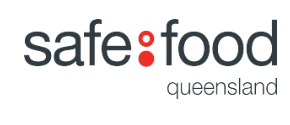Title Page
-
Site
-
Conducted on
-
Prepared by
-
Location
Physical (health, hygiene, space & awareness)
-
❏ Property signage – alert visitors before they enter your property.
-
❏ Handwashing facilities - well-stocked with soap, paper towels and disposal of wastewater and towels.
-
❏ Hand sanitiser dispensers – located where handwashing facilities are not practical consider hand sanitiser dispensers, particularly at entrances, exits and transition areas.
-
❏ Gloves and other personal PPE – supply available and being appropriately used
-
❏ Cleaning supplies, sanitisers, and disinfectants – supply available and being appropriately used, in accordance with manufacturer’s directions
-
❏ Refresher training – with a focus on personal hygiene and food handling. Keep a record of who has received training.
-
❏ Post informational signage - directing risk-minimizing behaviour for employees – beware of information overload. Keep it fresh and appropriate to your workers.
-
Examples include:
-
• Hand-washing procedures
-
• How to use hand sanitiser
-
• Glove usage
-
• Cleaning and Sanitising- example guidance; Queensland Health information for food businesses*
-
• COVID-19 Symptoms and how to stop the spread
-
❏ Review/develop and implement cleaning procedures and instructions – particularly for high-risk locations/surfaces
-
❏ Separate portable toilets – consider allocating for different crews.
-
❏ Use of tools - consider providing workers with their own tools where possible and ensure they are cleaned after use. i.e. own knives.
-
❏ Facility layout – consider redesigning production line design and/or staffing levels in order to enable workers to be at least 1.5 metres apart. Consider physical barriers (e.g. Perspex) if space is limited.
-
❏ Common areas - remove excess chairs and tables from lunchrooms and space apart to encourage staff to stay minimum 1.5 meters apart.
-
❏ Thermometer – suitable for contact-less temperature checks of workers (note commercial infra-red laser thermometers may need to be calibrated for human skin)
Organisational (health, hygiene, space & awareness)
-
❏ Health plan - if any of your workforce is travelling from interstate they are required to comply with Queensland border restrictions. As the sponsoring company, you must submit a health plan that complies with requirements set by the Chief Health Officer
-
❏ Border restrictions – prepare your essential workers with appropriate entry pass and evidence of business address and critical function before they travel interstate.
-
❏ Policies – review or develop and implement personnel policies and procedures to mitigate against the impacts of COVID-19, including for example:
-
• Fit for work policy
-
•A proactive sick leave policy
-
• A method for confidential reporting personal illness and close contact with individuals that test positive for COVID-19
-
•Managers to identify workers with symptoms of illness (particularly respiratory) for exclusion from work.
-
•Control non-essential visitors and outside contractors
-
•Control interaction with truck drivers and limit their movement on the property –request that they comply with social distancing requirements and provide comfort facilities and support their wellbeing where appropriate.
-
• A protocol that will be followed if workers are to be excluded from work as result of being identified as a confirmed case or close contact (as well as the process for returning to work), including<br><br>o Transport from the site to appropriate accommodation or health facility.<br><br>o Identification of potentially impacted staff<br><br>o Increased hygiene and cleaning of surfaces, equipment and break rooms, toilets and hygiene stations<br><br>o Where accommodation is provided by the business, the review of any other staff that share the accommodation and the potential for quarantining of<br>impacted staff in that accommodation if required Actions based on Health department advice.
-
• Scenario planning (like a mock recall) to test mitigation measures
-
❏ COVID-19-point person – appoint a person to handle communication and coordination to ensure staff are kept up to date and included in the process.
-
❏ Work zones - break the business into discrete zones for activities and limit the number of people working across more than a single zone.
-
❏ Cleaning roster - allow time and resources for enhanced cleaning measures
-
❏ Work crew rotation or team size - consider reducing the size of work crews in order to enable more space between individual workers. Consider critical skillsets for each crew and cross-train if possible and keep records of the teams.
-
❏ Work schedules and shifts - consider altering schedules so only a single crew is in a defined area at any one time. Stagger or increase time between shifts to minimize unnecessary interactions between workgroups and eliminate bottlenecks (e.g. anterooms or carparks). Gaps between shifts can also provide a window for cleaning between work groups.
-
❏ Break times - stagger break times to reduce the number of workers using meal facilities and ablution blocks at any one time are kept as small as possible
-
❏ Access to supplies - identify supplies that may be jeopardized in the current supply chain and plan allocation accordingly. Consider effect on product specifications, supply chain,production output.
-
❏ Review food safety program - if at any time there is a substitution or change in your production system, SOPS, product formulation or packaging, your food safety program should be reviewed.
Personnel (health, hygiene, space & awareness)
-
❏ Communication – ensure all workers and contractors understand the risks of COVID-19 and know how they can do their part in minimising the spread through<br>the workplace and community.
-
❏ “Fit for work” policy – prevent site access by people who may place the business at risk
-
•Health screening - develop and use a protocol for employee screening
-
❏ Social distancing - instruct staff to practice social distancing
-
•Maintain at least 1.5 meters of distance between each other whenever possible
-
•Avoid personal contact: shaking hands, etc.
-
•Restrict face-to-face meetings
-
❏ Hand hygiene - refresh staff on proper hand hygiene and glove practices including handwashing and other protective behavioral measures such as avoid touching doorknobs by hand etc. and refraining from touching your face
-
❏ Segregate off-site items – consider any off-site items potentially contaminated (bags, helmets, mobile phones, clothing)
-
❏ Respiratory hygiene - develop and use protocol for respiratory hygiene (see here for poster)
-
❏ Keep staff informed - Hold initial staff briefings on COVID-19 control strategies and regularly update and remind staff on COVID-19 control strategies. Use the time to raise awareness, build support, enforce and communicate COVID-19 related policies and procedures. Distribute information from authoritative sources to heighten staff awareness of the importance on implementing controls to prevent COVID-19 spread.
-
❏ Consider keeping records of individual workers in relation to their work teams, rosters, living arrangements (supplied housing or hostel) and who they travel to work with. This information will enable traceback if necessary.
-
❏ When providing any information or advice to workers or contractors, please ensure it is in a format and language that is easily interpreted and understood. Translation may be necessary.
Workforce accommodation (if applicable)
-
❏ Decentralise the accommodation of your seasonal workforce as much as possible. The smaller the groups living together the better
-
❏ Accommodate workplace crews together, minimising cross contamination between the different crews working on your site
-
❏ Limit those accessing staff accommodation to those living there, including those that are working for the company, but living in other accommodation. No events beyond groups that already live together.
-
❏ Shared facilities - minimise the use of shared cooking, laundry and ablution facilities as much as possible between groups. If various groups do need to use shared facilities create a roster for when the facilities must be used by the various groups to minimise the numbers of people using these facilities at any one time i.e. follow social distancing protocols
-
❏ Workers from hostels- endure clear communication between your business and the hostel to ensure continuity in the worker supply chain. There will be practical solutions to manage the risk such as work teams living and travelling together and isolating from<br>others at accommodation.
-
❏ Cleaning and hygiene protocols - risk assess and adjust accommodation, cooking, laundry and ablution facility cleaning protocols. Consider personal hygiene protocols and cultural sensitivities.
-
❏ Alternative accommodation - identify alternative accommodation facilities to be used by those experiencing symptoms to self-isolate
-
❏ Social distancing - Ensure workers practice social distancing in the community outside work hours.
-
❏ Car-pooling - Discourage car-pooling. If it is necessary, limit to those already sharing accommodation and/or those working in the same teams on packing lines or in harvest crews.



















